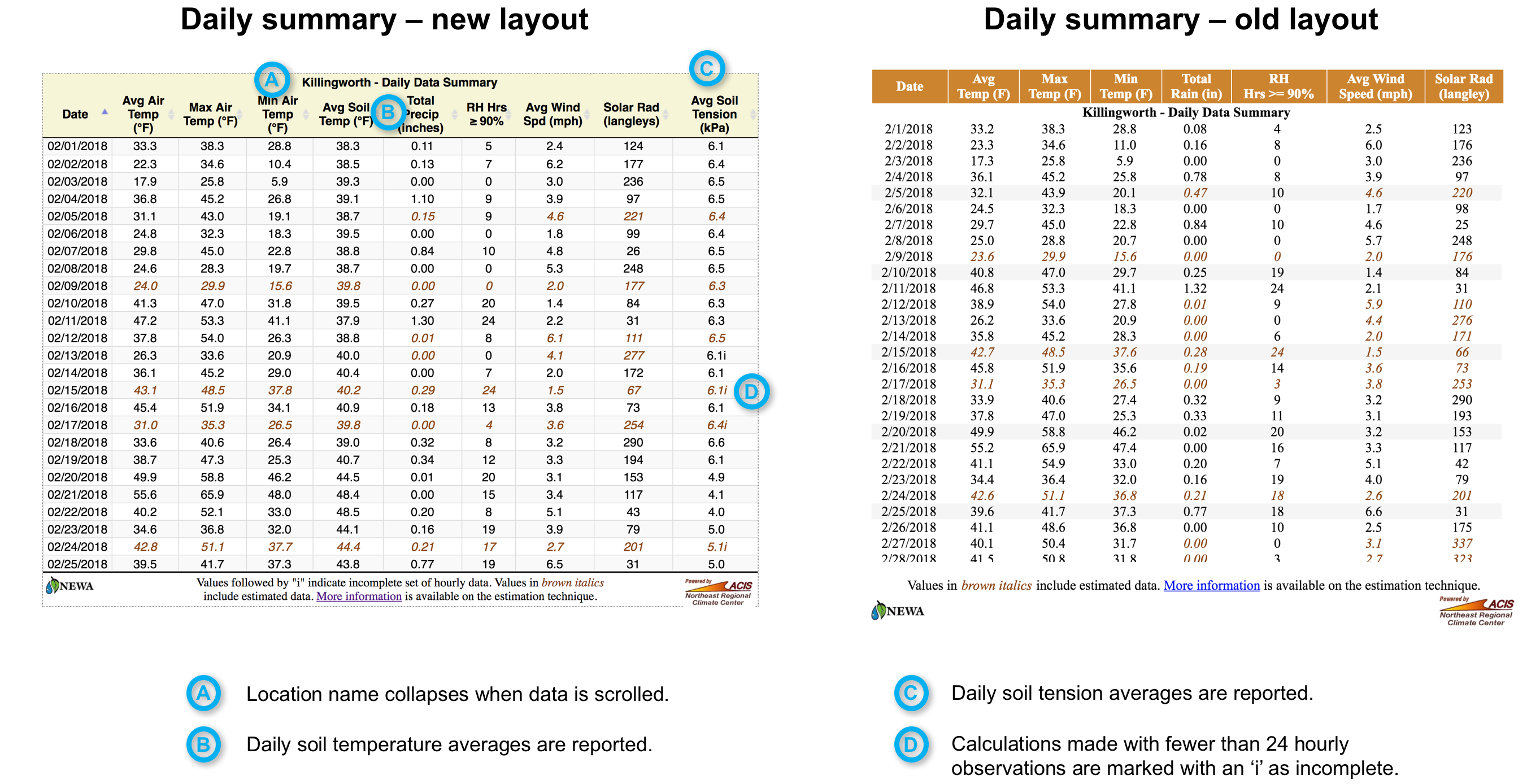Weather stations occasionally use substituted data for quality control purposes. This article describes why and how.
NEWA models need continuous data to provide accurate insect and plant disease risk forecasts. To ensure this continuity, an existing weather station is paired with each new location as a backup data source. Paired data sources are useful when a station is out for extended periods of time for maintenance or calibration. When an instrument is out, onsite conditions are lost unless information from a similar paired location is substituted. Once online, the dataset is ‘patched.’ connecting old information with new. Brown, italicized text is used to indicate substituted data.
NEWA also uses paired station data when sensors on the primary station fail to report. Sometimes a weather unit is functional but something important like solar radiation malfunctions. Paired station data is substituted for only that sensor while all other data come from the primary instrument.
To view paired station information, scroll to the bottom of any hourly or daily data summary and click more information.


